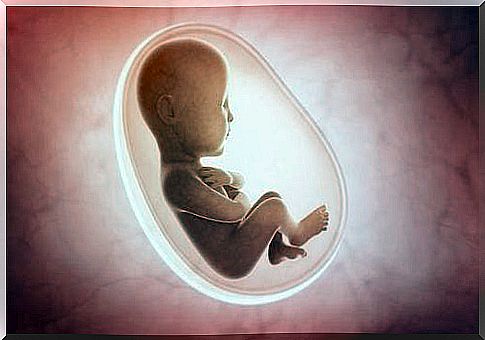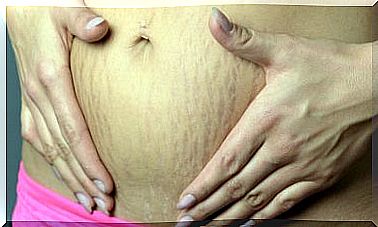What Is Intrauterine Growth Retardation?

Pregnancy is one of the most pleasant moments in a woman’s life. However, it is also a stage that is fraught with risks and worries. One of the possible complications is intrauterine growth retardation.
Although it rarely happens, it is still important to be aware of this condition. This complication leads to the fact that the fetus is below average in size.
Below we are going to tell you the factors that are causing this problem. In addition, we will also discuss the prognosis for babies with this fetal development disorder.
What is intrauterine growth retardation?
This problem, also known as prenatal dystrophy and fetal hypertrophy, is a medical condition that indicates that a baby is growing below normal standards. It is important to mention that not only are these babies small, but the rate of growth in the uterus has also slowed down.
The consequences of intrauterine growth retardation include low birth weight and other birth complications. A low birth weight refers to below 2500 g.
Types of fetal growth disorder
The classification of fetal growth disorder largely depends on the origin of the abnormality. As a result, babies can suffer from symmetrical or intrinsic growth retardation that is typical of certain chromosomal defects.
In this case, there is decreased growth of the entire body, extremities, abdomen and head.

An extrinsic or asymmetric intrauterine developmental disorder can also occur, usually due to an irregularity in the placenta. In this case, the head can develop normally while the abdomen and extremities remain small.
At the same time, there is another type of fetal growth disorder that occurs in combination. In this case, the condition is the result of unknown causes. It is important to note that not all young babies have fetal growth disorder.
It is therefore important to rule out factors such as genetic problems. If the parents are young, the baby is likely to be small too. At the same time, the small size of a baby can be the result of other pathologies.
Causes of intrauterine growth retardation
The causes of this complication can be varied. In general, however, it has to do with the poor functioning of the placenta. This organ is the connection between mother and fetus and manages the nutrients the baby needs.
However, when the placenta does not function properly, it leads to disruption of fetal growth. This condition can also be caused by other factors, which we will discuss in more detail below:
Environmental conditions
Experts believe that pregnant women who live at higher elevations are more likely to have small babies.
This may be due to the amount of oxygen in the air, which is lower at high altitudes. The same applies to future mothers who live in heavily polluted cities.
Bad habits
Another cause of restriction in intrauterine growth can be the mother’s harmful habits, such as smoking during pregnancy or the abuse of drugs and alcohol. These addictions can have serious consequences for babies, including very low birth weight.
Diseases
Other diseases such as arterial hypertension, heart defects and metabolic disorders can also be responsible for the fetal growth disorder. Because each of these conditions can reduce the amount of oxygen, vitamins, and minerals that reach the placenta. As a result, the fetus is unable to develop adequately and therefore suffers from intrauterine growth retardation.
If the mother also takes medication for these problems, there is also an increased risk of developing a fetal development disorder. Likewise, poor nutrition, strenuous activity and a lack of information can lead to a below-average birth weight.
Other causes of intrauterine growth retardation
Other causes that can provoke this condition include:
- Genetic changes, such as Down syndrome and Turner syndrome
- Malformations of the fetal organs
- Infections of the uterus
- Cases of multiple births
How is intrauterine growth retardation diagnosed?
In order to recognize and diagnose this condition , the mothers should have prenatal check-ups and ultrasound examinations and have them performed. In this way, doctors can observe whether the blood is flowing correctly into the placenta and how this organ is behaving.
These procedures are routine and simple and risk-free. Hence, they are fundamental to preventing major complications.

What are the chances of survival with intrauterine growth retardation?
In most cases , these babies’ condition improves quickly after they are born. Depending on their weight, doctors recommend observing affected babies in an incubator until they can eat and gain enough weight.
In summary , intrauterine growth restriction is a condition that can occur at any stage of pregnancy.
The causes are varied and a good prognosis is possible. Ideally, mothers should follow their doctor’s instructions and have all prenatal checkups performed as directed.









